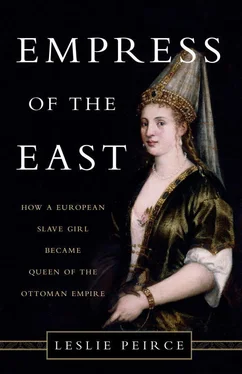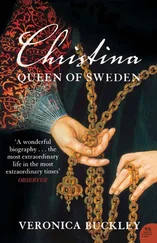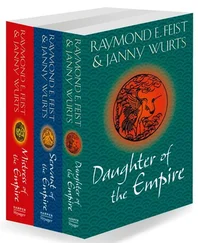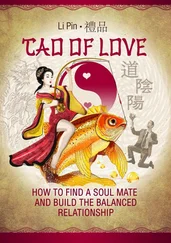When Roxelana came into Suleyman’s life, he had just inherited an empire that commanded the eastern Mediterranean seas, the Black Sea and its shores, southeastern Europe, and much of today’s Middle East. His great-grandfather Mehmed II stamped his coins with the phrase “Sultan of the two seas, Khan of the two lands.” Known among the Turks as “the Conqueror,” Mehmed had put an end to the millennium-old Christian empire of the Byzantines and made ancient Constantinople his capital. While Suleyman’s grandfather Bayezid II was more a statesman than a warrior, his father Selim I threatened east and west. In two long wars, Selim pushed back the rising new power in Iran and demolished the venerable Mamluk sultanate in Cairo. From the latter he took Egypt and the Levant, as well as the prestigious title of “servitor of the two Noble Sanctuaries,” the holy cities of Mecca and Medina. Selim was preparing to invade Europe when he died suddenly in 1520. The pope and several kings were said to be relieved when Suleyman ascended the Ottoman throne, for they considered him a novice at fighting wars. He would soon prove them wrong.
Starting with the wresting of Belgrade from Hungarian control in 1521 and the island of Rhodes from the Knights of St. John in 1522, Suleyman pushed the empire further into Europe and Asia and, within a decade, laid claim to the mantle of the Roman empire. Of the thirty-seven years Suleyman lived with Roxelana, he spent a total of ten apart from her on twelve different military campaigns. She missed him terribly, as her letters demonstrate, but there was much to keep her busy in his absence. The raising of their several children was an enormous responsibility. When her sons left home to embark on their public careers, she worried about them, and so she went long distances to visit them. In Istanbul, she had the company of her only daughter Mihrumah, who was famously devoted to her parents and equally treasured by them. Tutored by her mother in the dynastic responsibilities of royal females, Mihrumah would become the greatest of Ottoman princess philanthropists. She would also learn from her mother that corresponding with foreign royalty could sometimes benefit the empire in ways that diplomacy among men did not.
As queen, Roxelana kept herself occupied as mistress of the female court, receiving visitors and organizing celebrations to mark religious and social holidays. She had the palace harem household and its cadres of attendants and servants to oversee, though the principal responsibility for order and discipline lay with the palace staff of female administrators and eunuchs. It was Roxelana who ensured that talented harem women graduated from palace service to marriage with a deserving partner, generally an esteemed member of Suleyman’s government. She also managed the staff of male agents who worked for her outside the palace. The business of her far-flung charitable endowments in particular took up an increasing amount of her and their time. And as she acquired political acuity, she became Suleyman’s eyes and ears in the capital when he was away. Developing networks of contact and gathering intelligence became critical, including information that could be gleaned from female agents and female visitors to the palace. Following the death in 1534 of Suleyman’s mother Hafsa, Roxelana became Suleyman’s most loyal informant.
It was the demise of Hafsa, beloved by her son and a venerable figure, that made possible Roxelana’s marriage to Suleyman. Not that Hafsa necessarily opposed the union (there is, unfortunately, little to tell us what she thought of her son’s extraordinary relationship), but the politics of the court would not permit a concubine to rise above the status of the queen mother. Then Roxelana’s nuptials in 1536 literally opened the door to the New Palace, Suleyman’s own domicile, which welcomed her with an elegant suite of rooms adjacent to his. A cadre of attendants and servants accompanied her from the Old Palace, longtime home of the royal harem. Roxelana retained chambers in the Old Palace, however, for Hafsa’s death meant that she, as the top-ranking female of the dynastic family, was now responsible for the harem’s welfare.
Roxelana’s change in residence ushered in what was to be her greatest legacy: the transformation of the royal harem into a political force. Known today as the Topkapı Palace, the New Palace was a vast complex of structures built by Mehmed the Conqueror when his first royal residence in Istanbul (now the Old Palace) proved too small to house both his royal presence and the major offices of his government. Under Roxelana’s tutelage, the New Palace harem would expand rapidly and become, by the end of the century, a regularized institution in Ottoman government. The upper echelon of royal women now lived and labored at the political heart of the empire, while the Old Palace retained its stature as a training institution and home for retired harem women. Working from the New Palace, senior women developed networks that connected them with political allies on the outside, including foreign emissaries. Despite periodic outbursts of antipathy to female “meddling,” the harem’s practice of politics had become normalized, and so it remained throughout the life of the empire.
Roxelana died in 1558, leaving Suleyman without her for eight years until his death in 1566. She died with the comfort of knowing that one of her sons would succeed his father but also with the fear that the contest between them would be bloody. She would not live to know that the idea of a reigning couple—a sultan and his queen—proved too controversial for the Ottomans to repeat. After her, the New Palace harem whose rise she sparked would be headed by the queen mother. Nor did Roxelana know that she would gain both fame and notoriety in the centuries after her death through her depiction in European literature and opera and even through a modern Turkish television drama with an avid worldwide following.
Roxelana may have anticipated correctly, however, that the nature of politics at the heart of the empire would change. In fact, her career was proof that change had already begun. Even if there never was another queen, she and Suleyman set precedents that were still at work in their children’s and grandchildren’s generations. A more peaceable system of identifying the next sultan began to emerge from transformations in the practice of succession-by-combat that began with her. Roxelana helped to move the Ottoman empire into modern times, where treaty negotiations became as challenging and significant as victory in battle and domestic well-being occupied as much of the government’s attention as conquest. Bolstered by the reforms she introduced, the Ottoman sultanate would sustain itself for another three and a half centuries. All this was generated along with the Ottoman empire’s greatest love story.
ROXELANA’S CACHET WAS such that more than one nation would lay claim to her. It was said, for instance, that she was Italian by origin, from Siena. Or perhaps she was abducted from Castel Collecchio in Parma in 1525 (when she was already the mother of three Ottoman children). [1] Alberi, Relazioni , 3:102n1; Hammer, Histoire , 5:487.
The French never called Roxelana their own, but a popular belief held that the kings of France enjoyed a blood relationship with the Ottoman sultans. A French princess of the fifteenth century had allegedly given birth to Mehmed II, the conqueror of Byzantine Constantinople—or perhaps it was to his father Murad II.
The notion that a French princess was mother to an Ottoman son may have been far-fetched, but it was not entirely implausible in the fifteenth century. Ottoman princes were still making marriage alliances with foreign dynasties into the reign of Murad II (who died in 1451). The assertion of a blood tie perhaps looked quite appealing in the sixteenth century, when Suleyman and the French king Francis I began to cultivate a political alliance against their mutual rivals, Spain and the Holy Roman Empire. But the suggestion that the Ottoman harem once housed a princess from France seems to have run its course by the late eighteenth century, when the French ambassador to Istanbul blamed Roxelana for propagating it. [2] Isom-Verhaaren, “Royal French Women,” 174.
He found the idea that a princess could go missing absurd. It is surely a measure of Roxelana’s posthumous fame that she bore the blame for deeds that may never have crossed her mind.
Читать дальше












